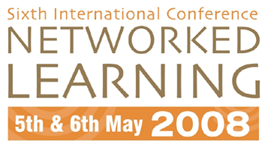

An integrated multimedia e-learning model for vocational training
Arne B. Mikalsen, Bjørn Klefstad, Svend Andreas Horgen
and Thorleif Hjeltnes
The research foundation TISIP and Sør Trøndelag University
College, Faculty of Informatics and e-learning
Abstract
Building an e-learning environment suitable for vocational training in a non-academic context is challenging. Vocational Education and Training (VET) students normally don’t have the academic background needed to take university e-learning courses. Pedagogical models developed for university e-learning are often adapted to active and collaborating students, who are used to seek out information in textbooks and on Internet. This is not appropriate or must be adjusted with students in vocational training.
This paper will present an integrated multimedia model developed for practical training. It focuses on a variety of learning styles, developed to satisfy students with different needs. Oral presentations, web pages, video presentations, animations and a thorough automated assessment are important parts in each module of the learning content. The content is produced by rather simple tools and integrated into a powerful combination. This strategy makes it possible to develop high quality, multimedia e-learning content in a quick and inexpensive way.
Team work is a key point in the development of e-learning content, both in the sense of creativeness, distribution of work and competence and quality assurance.
TISIP has developed a training course and a corresponding model for a national trade association of Norwegian butcheries, called Animalia. As an e-learning provider, TISIP is not an expert in the industry of butcheries. The customer’s role has been to obtain and deliver the raw material, i.e. subject content. A successful e-learning product is dependent both on the quality of the content but also on an extensive and fruitful communication between the e-learning provider and the customer throughout the entire production phase, also amongst members of the development team. This paper has a practical approach, and is based on experiences gained during the development process.
The construction of e-learning models is often based on several pedagogical ideas. In traditional university courses, models with a high level of communication and collaboration, in combination with the students own reading and writing of essays, have been central, i.e. sosio-constructivistic approaches.
Nevertheless, the constructivistic approach is not always applicable. Working with students without an academic background often requires a different tradition. We have experienced that an instructional training program, consisting of a great variety of teaching styles improves the learning experience. Students with certain disabilities like dyslexia find this model especially valuable.
Rapid e-learning is a methodology expressing the key point in the described e-learning model. By this method, we create practical training programmes in a very short period of time.
Multimedia development is often very expensive. Our e-learning model
use effective tools that makes it possible to produce rich multimedia
content both quickly and with relatively low development costs and without
involving professional studios. With these tools teachers and researchers
are able to produce the content themselves, in their office.
| About NLC |
2008 Conference Papers
| Conference Committee| Keynote
Speakers
| Papers from previous NL conferences |Research Seminars| Current Conference
| Sponsors | Contact
|
